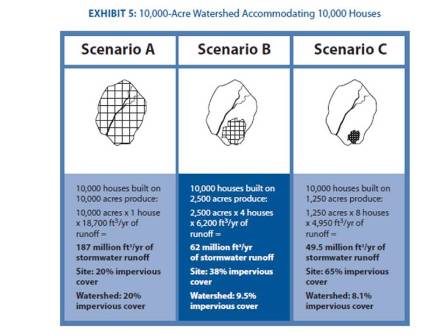Designing communities in a compact way that uses less land and water per person is an important strategy to keep our watershed healthy and reduce global warming; it is a strong message running through HRWC’s programs.
With that in mind, we wonder, what is the “greenest” city in the U.S.?
By some measurements, that would be the City of New York.
Yes, the highest density, most paved, most populous city in the country, is the greenest.
As mentioned in a recent Concentrate Speaker Series lecture by land-use strategist, developer and Brookings Institution fellow, Christopher Leinberger, the average New York City resident uses less gas, drives less miles, and takes up less space than any other American. This is because New York City is very compact. People in New York can walk to most of their destinations, or use public transport. Their compact apartment buildings consume less electricity per unit than larger, spread-out homes in other cities across the country. In fact, New Yorkers have the smallest carbon footprints in the U.S. – 30% of the national average. On average, “drivable suburbs” consume 5 times more greenhouse gases than “walkable urban” communities.
Of course, not every city or region can stuff all its citizens into the compact, high rise pattern of development of New York City. But this example underscores the most important factor in reducing greenhouse gases: how we build our communities.
Compact communities are also necessary to maintain a watershed’s health, as one of the most important indicators of watershed health is the percentage of impervious surfaces that cover it. Once impervious surfaces cover more than 10% of a watershed’s land, water quality suffers. The only way, therefore to maintain a watershed’s health is to encourage compact development and protect natural areas.
The good news is that our development patterns are trending back towards our cities, according to Leinberger, as empty nesters and young people see the benefits of city living in walkable, livable communities.
We all need to do what we can to encourage density as a tool to protecting water quality and curbing climate change. One silver lining to the current economic downtown is that local planners have less development pressure and can spend time and thought on improving their local land use planning policies.
Now is the best time to encourage your local government to enact strong land use planning tools to encourage well designed, compact, walkable, and energy- and land-efficient neighborhoods. For more information, see HRWC’s web pages on Land Use Planning, Leading Your Community, and Smart Growth Publications. For more information about climate change in our watershed, see our special newsletter issue.
For more information about protecting water quality with density, see The EPA’s Website on Smart Growth.





